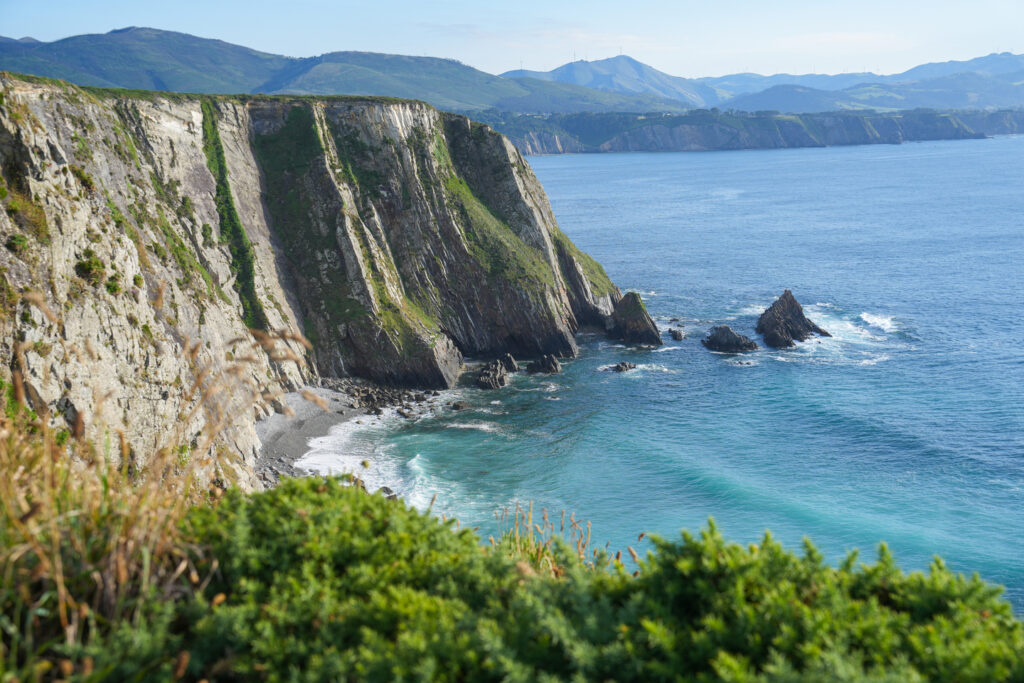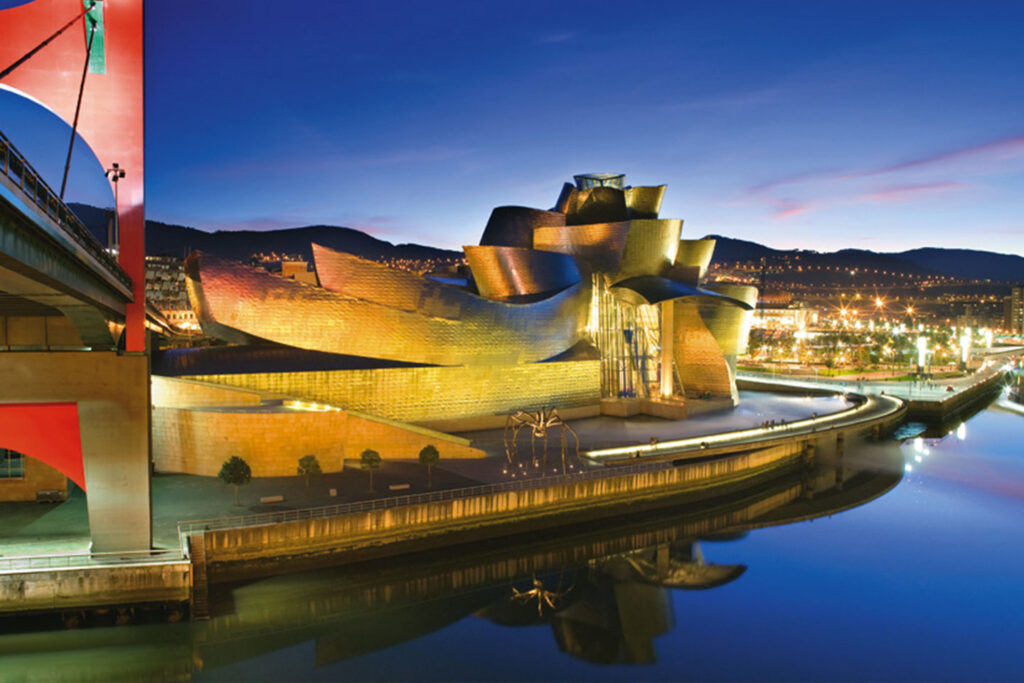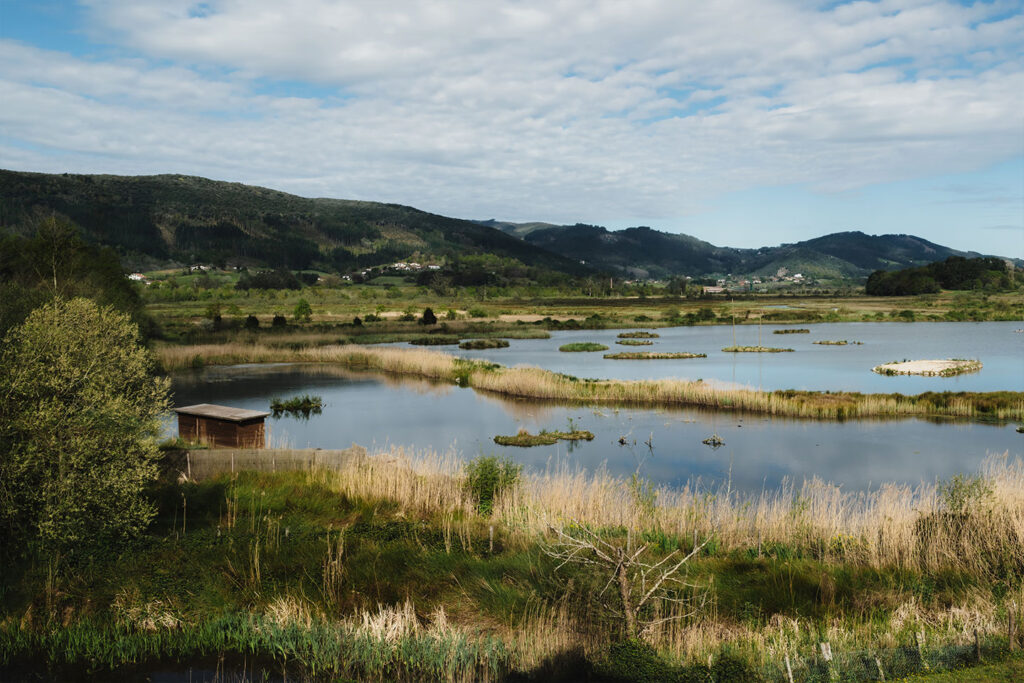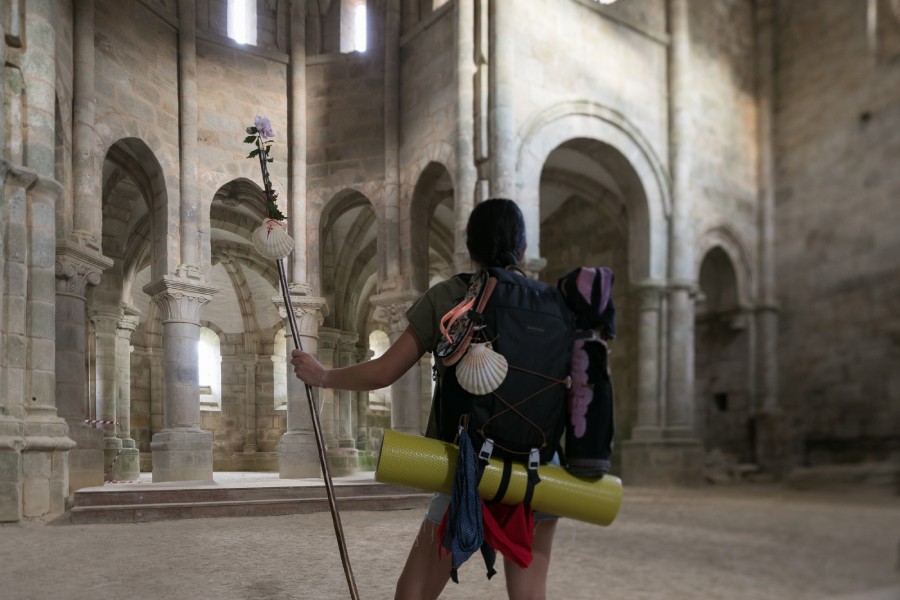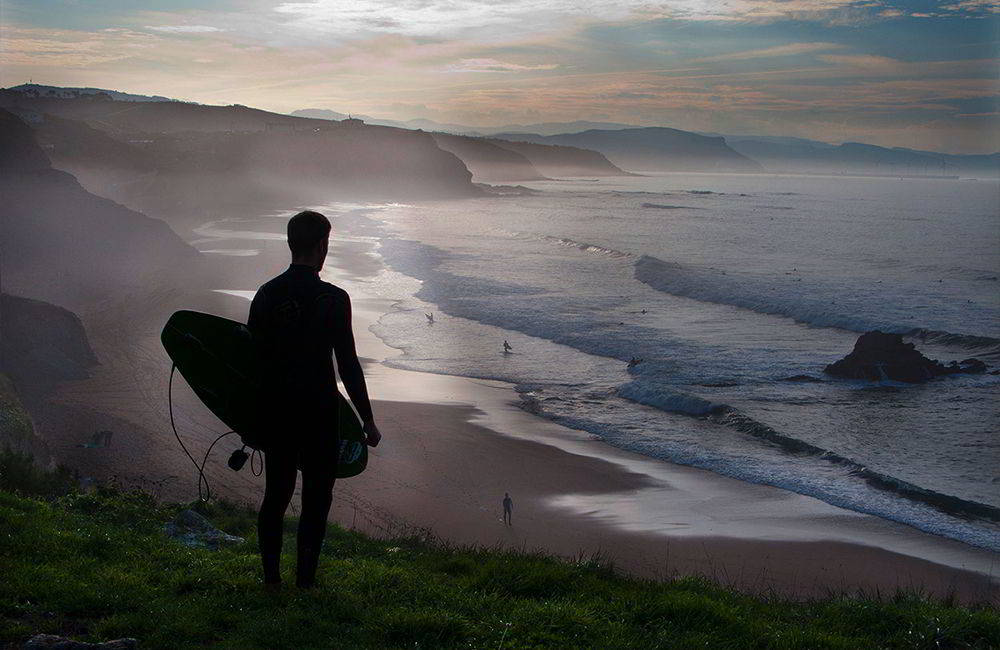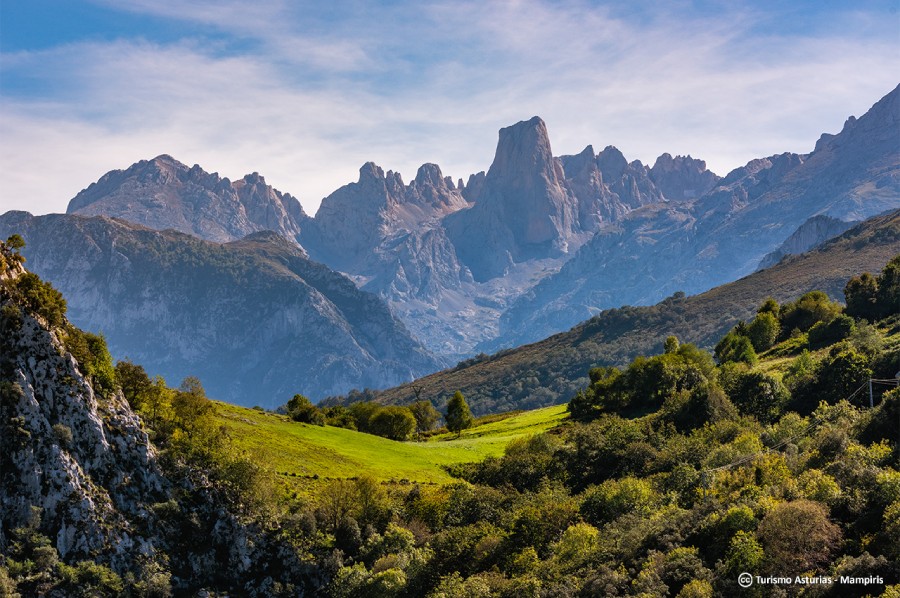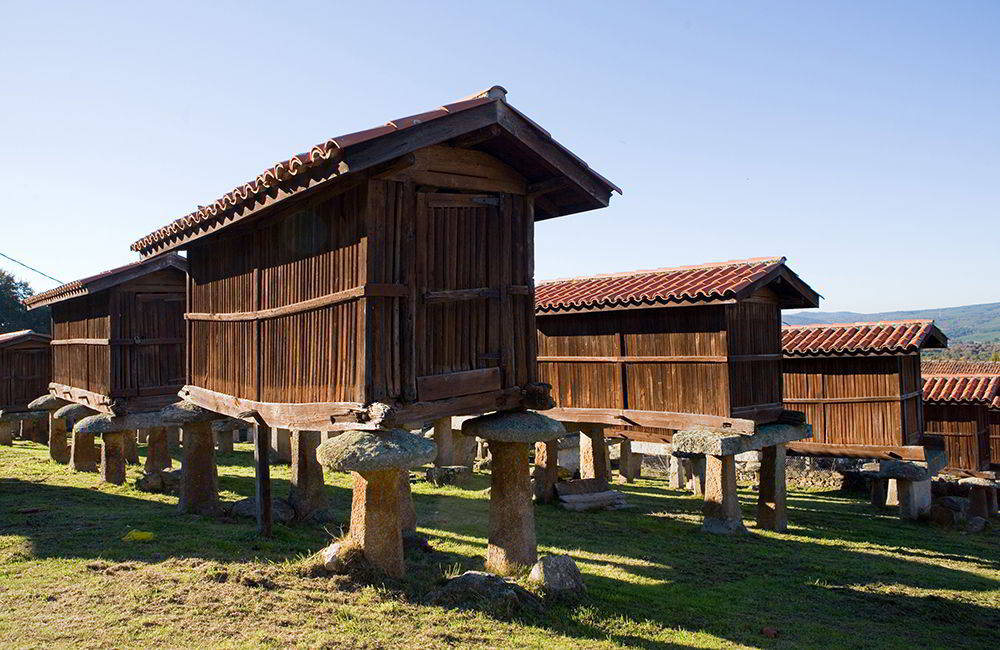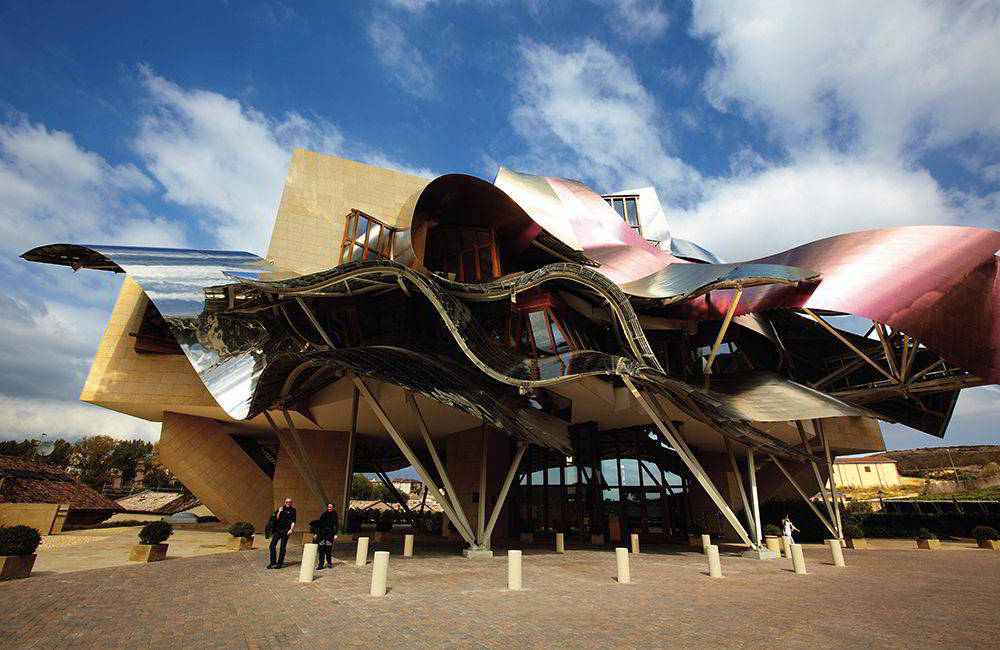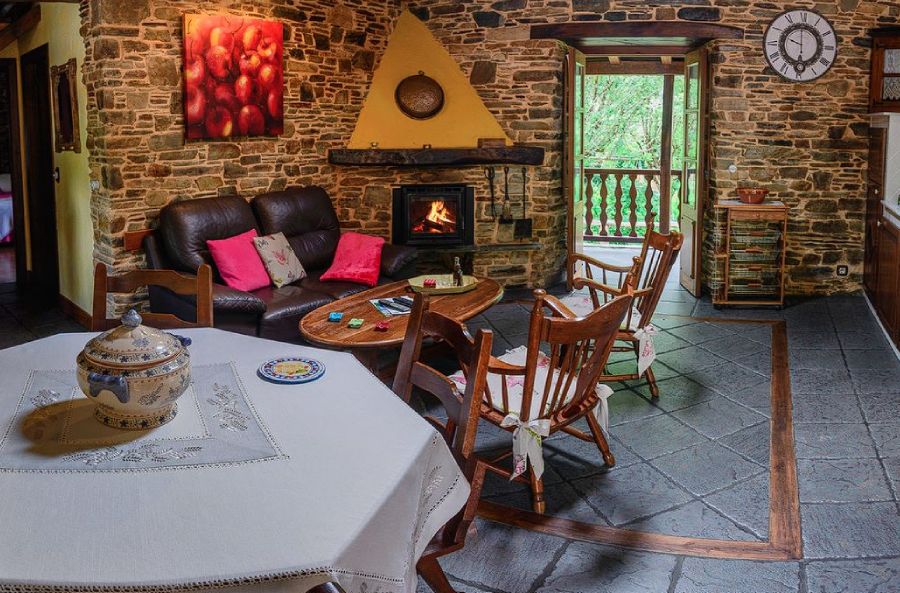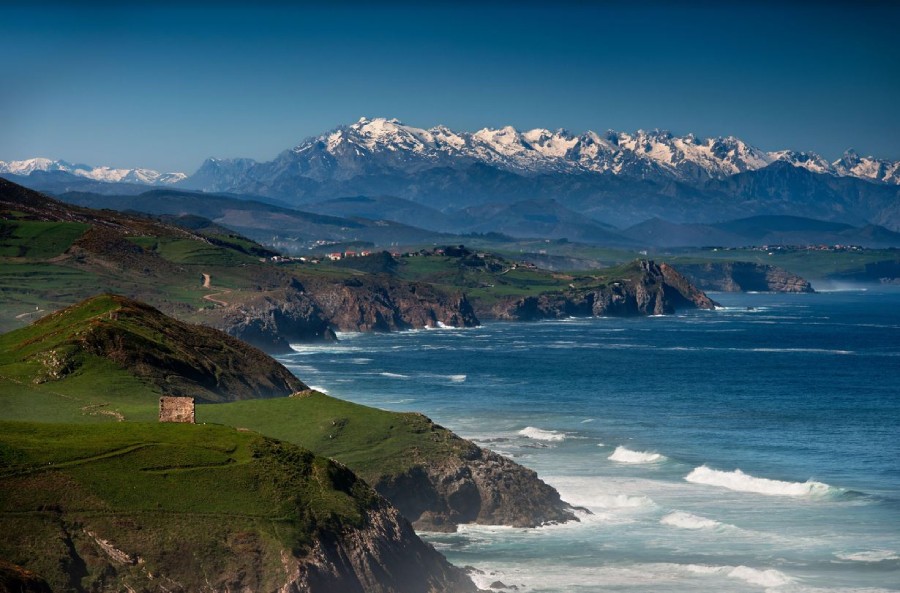Only when summer goes to sleep does the grape harvest awaken. It’s during these dates when the wineries of Green Spain experience a peak of activity that enriches the experience of visiting them. Of course, you can discover their secrets, walk through their vineyards, taste their wines, and simultaneously witness the busiest weeks of the year.
1. Rioja Alavesa (Basque Country) — D.O.Ca. Rioja
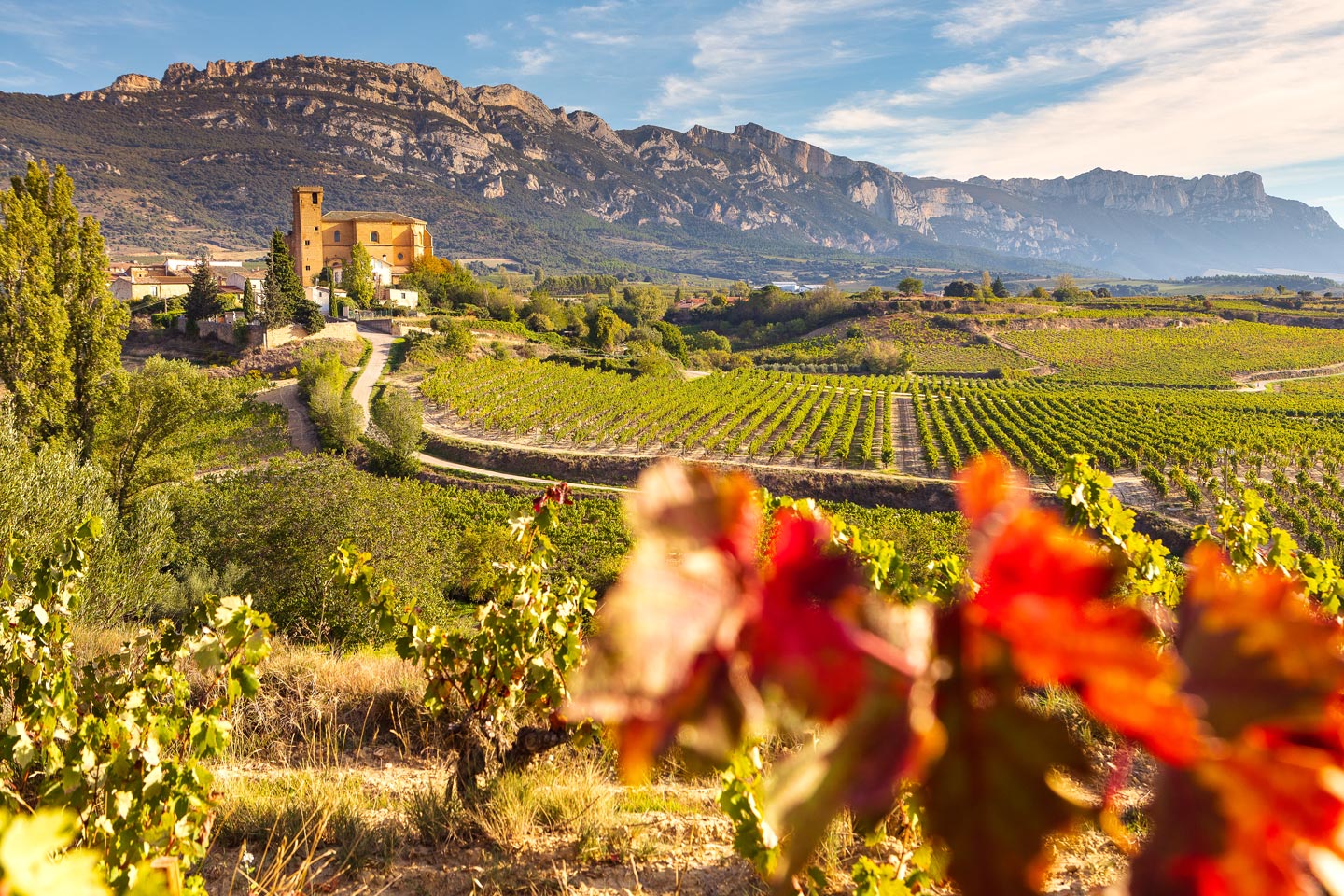
What landscape will I find?
One of the most unique spaces on the wine routes of Green Spain: thousands of terraces filled with vineyards nestled between the rocky Cantabrian mountains and the Ebro River. This singular location enables a microclimate that has given worldwide fame to the wines of Rioja Alavesa, which are part of Spain’s oldest Denomination of Origin.
Which places should I not miss?
Laguardia, perched on a rock with a prodigious polychromed portico in its Church of Santa María de los Reyes; Elciego, famous for housing another titanium architectural icon by Frank O. Gehry; Labastida, with its old town, its atmosphere, and excellent views over the Ebro Valley from the hermitage viewpoint; the charming Samaniego or the wetland of El Prao de la Paul. A golden finale after a day of intense sensations experiencing wine tourism in Rioja Alavesa? The dolmen of La Chabola de la Hechicera in Elvillar/Bilar at sunset.
What wine experiences can I join?
There are more than fifty wineries of all types open to the public to learn about their facilities, processes, vineyards, or wines. Many of them also offer experiences at the vineyard. The Rioja Alavesa harvest festival (perhaps the most celebrated harvest in the Basque Country) usually takes place on September 15th and is celebrated in a different village each year. The Villa Lucía Wine Theme Center in Laguardia is a complete museum dedicated to discovering all the secrets of fermented grape juice.
2. Liébana Valley (Cantabria) — P.G.I. Wines of Liébana
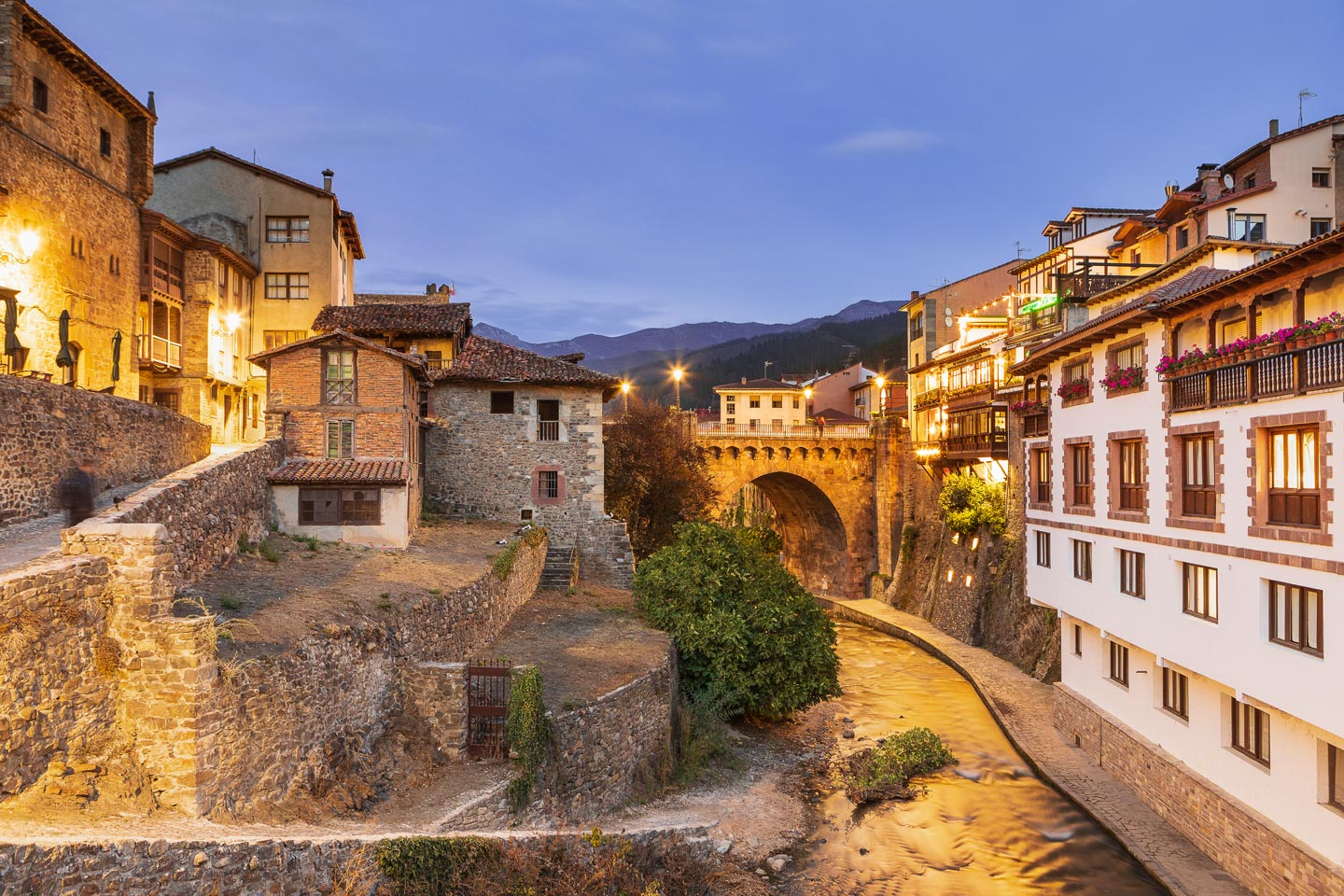
What landscape will I find?
In the case of the Liébana valley, both the destination and the journey matter: to reach it from the coast, you must cross the narrow Hermida gorge. In just forty kilometers, you pass from the coast to the foot of the great rock walls of the Picos de Europa. Liébana also hides mountain villages, lonely medieval churches, beautiful beech forests, many meadows, and an entire gastronomic culture linked to that landscape.
Which places should I not miss?
The Liébana Valley has been a mythical place for human transit for centuries. The Santo Toribio de Liébana monastery houses the Lignum Crucis, the largest known fragment of Jesus Christ’s cross. This has granted it recognition since the Middle Ages as a holy place for Christianity, along with Jerusalem, Rome, and Santiago de Compostela.
Due to this importance, the monastery has become a mandatory visit for thousands of pilgrims who travel the Lebaniego Way each year, a UNESCO Heritage site. The route connects San Vicente de la Barquera, on the Northern Way of Saint James, with the mentioned monastery, crossing five protected natural spaces.
Besides its religious significance, the valley offers other attractions, such as the monumental and always vibrant Potes, its rich gastronomy, including cheese and orujo liquor, as well as wine, and the Fuente Dé cable car, which provides access to the Picos de Europa from Cantabria.
What wine experiences can I join?
For centuries, the Liébana Valley turned its back on wine production, almost losing this tradition. Currently, more and more wineries are working with wine and organizing around the Protected Geographical Indication of Liébana Wines. Some of them can be visited for tastings not only of wines but also of their renowned orujo liquors.
3. Narcea Valley (Asturias) – P.D.O. Cangas
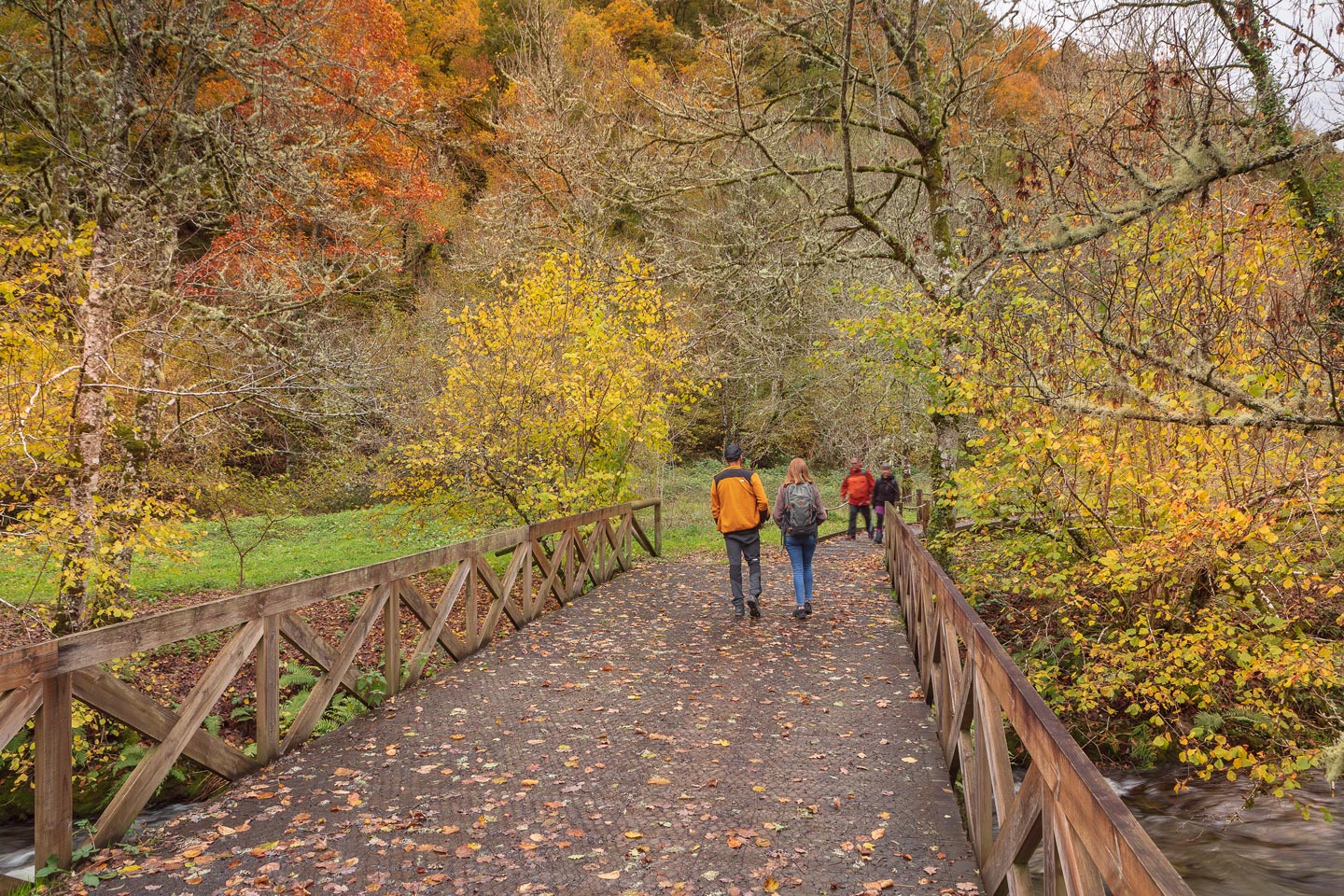
What landscape will I find?
A purely Asturian landscape but seasoned with vines. What does this mean? That there are narrow valleys, few plains, large mountains, and slopes with impossible gradients where the vines grow. The wines of the Cangas P.D.O. dazzle not only in tasting but by their very nature, being produced in a territory with little wine fame… and much cider fame, although in this corner of Asturias they have been working with grapes since the Middle Ages.
Which places should I not miss?
It’s ideal to start with Cangas de Narcea, the main urban center, experience its atmosphere, discover its small palaces, and soak up all the possibilities of the region. The next mandatory stop is at the Corias Monastery, known as ‘The Asturian Escorial’ for its extraordinary dimensions. This religious building would be the epicenter of wine-making Asturias, in addition to hosting a reputable winery open for tastings and visits. Nature lovers should approach Muniellos, the gateway to discovering Spain’s largest oak forest, declared along with other spaces as the Muniellos Biosphere Reserve.
What wine experiences can I join?
Encountering vineyards in such rugged terrain as Asturias always makes an impact. They don’t call it ‘heroic viticulture’ for nothing. Of course, you can visit half a dozen wineries, cider houses, and vineyards that usually enjoy unbeatable views. In mid-October (note the difference in dates compared to Rioja Alavesa), a festival is celebrated around the start of the harvest in Cangas de Narcea, an unbeatable occasion to visit the area.
4. O Salnés (Galicia) — P.D.O. Rías Baixas

What landscape will I find?
A complex and fascinating one that combines estuaries, beaches, open sea, rocky coastline… This variety of gentle profiles has created a unique wine-growing landscape: hundreds of hectares of vineyards with Atlantic views, mostly loaded with the iconic Albariño grape, neighboring beaches, charming fishing villages, or natural spaces unique in Europe.
Which places should I not miss?
In the O Salnés region alone, there are a good number of natural, urban, or cultural spaces that can be perfectly alternated with wine tourism: the welcoming town of Cambados, the idyllic Illa da Toxa, sophisticated Sanxenxo, Illa de Ons watching over the O Salnés peninsula, the great beach of A Lanzada, the vast Umia-O Grove intertidal complex (ideal for bird watching) or any corner of Illa da Arousa for hiking and breathing fresh Atlantic air.
What wine experiences can I join?
More than thirty O Salnés wineries with the Rías Baixas Designation of Origin have their doors open for visits, tastings, walks through the vineyards, or pairings with seafood that has made Galicia famous. If one had to mark a date on the calendar, it would undoubtedly be the first weekend of August, when the Festa do Albariño is celebrated, one of the most important wine celebrations in Galicia and all of Spain. It takes place in Cambados and, among many other activities, awards the best Albariño of the year.
